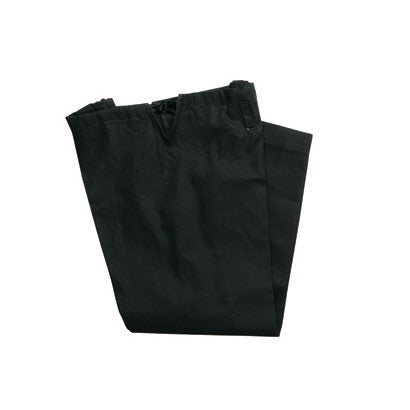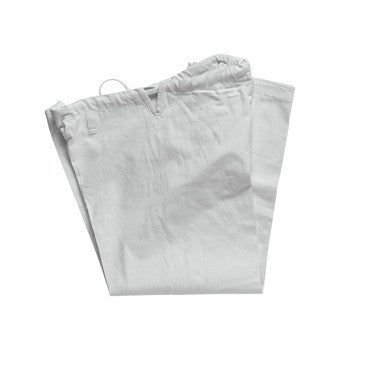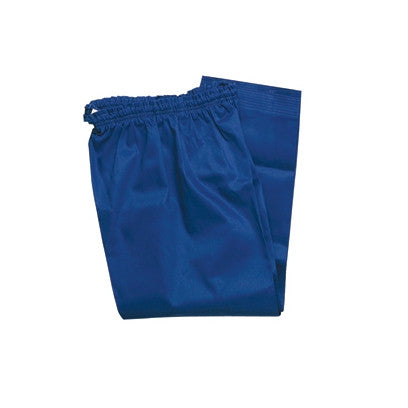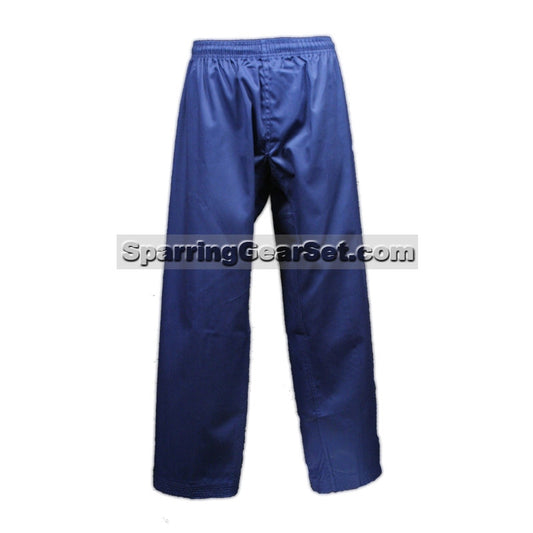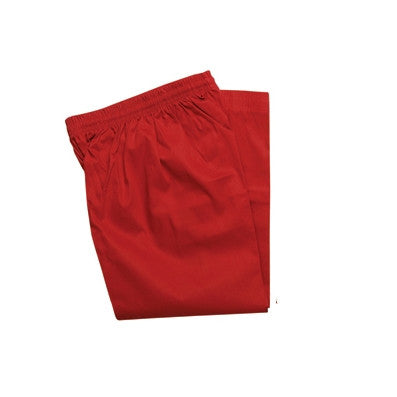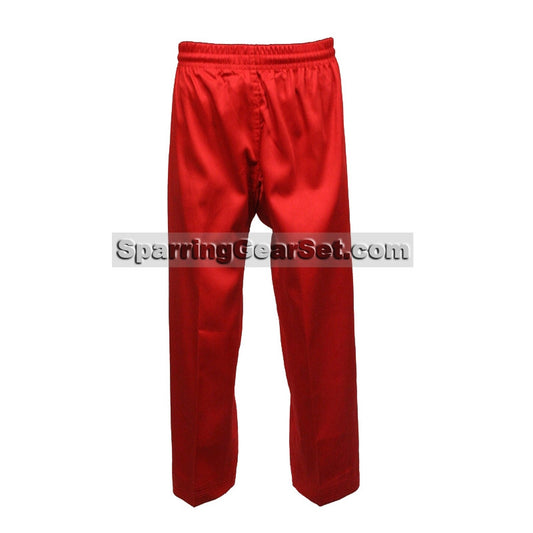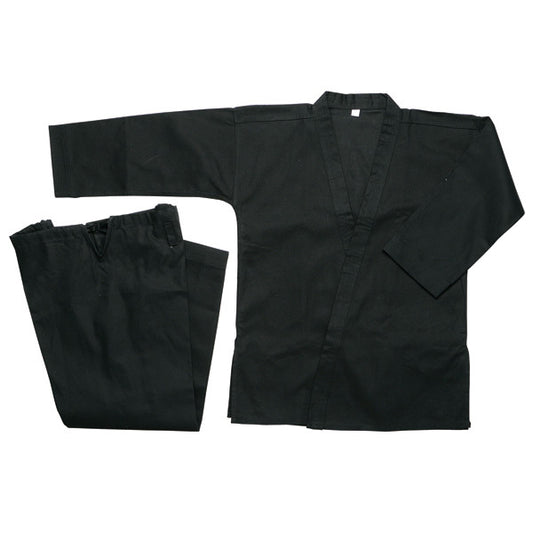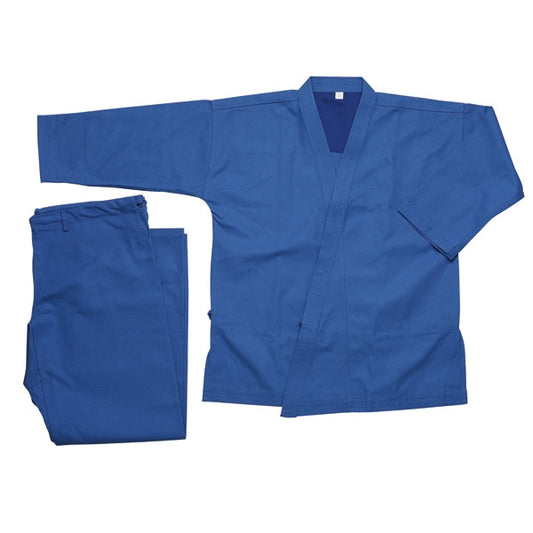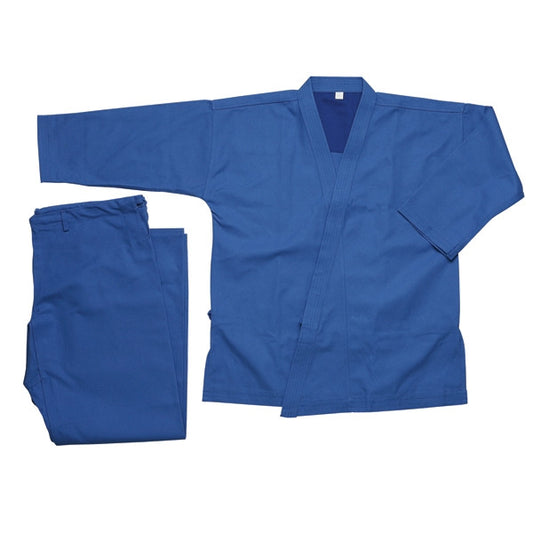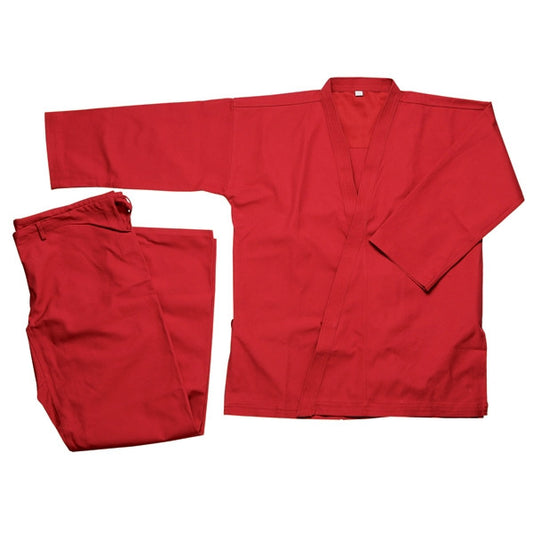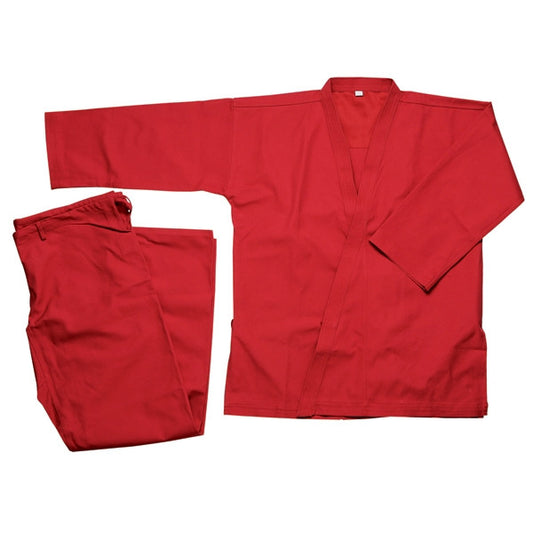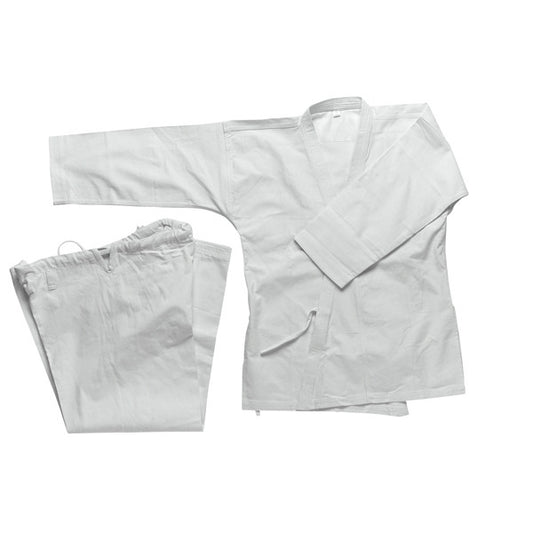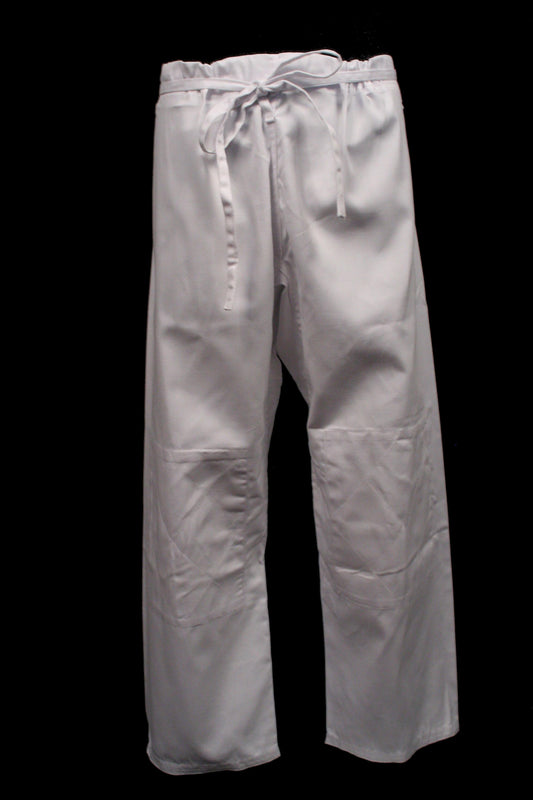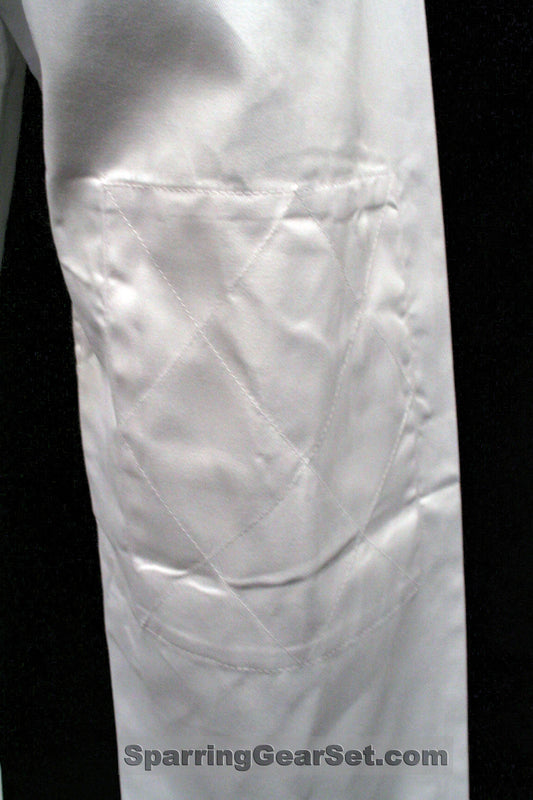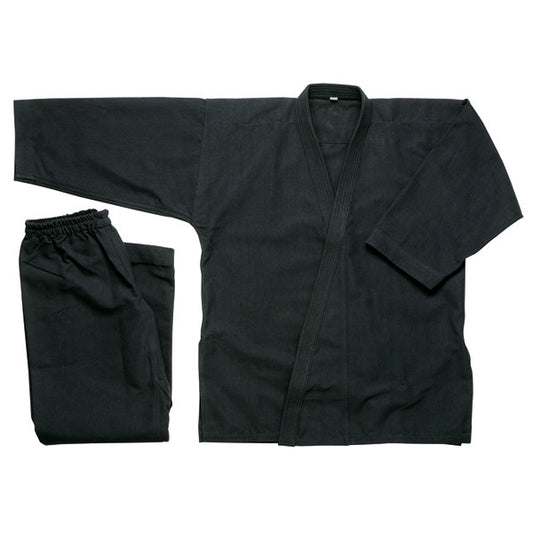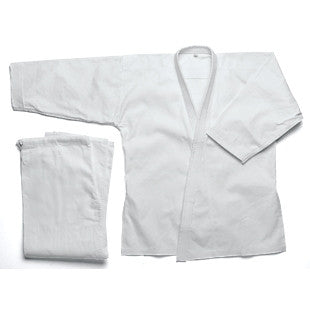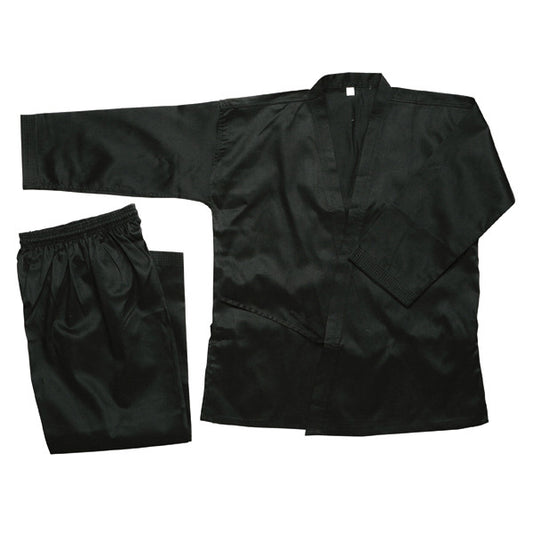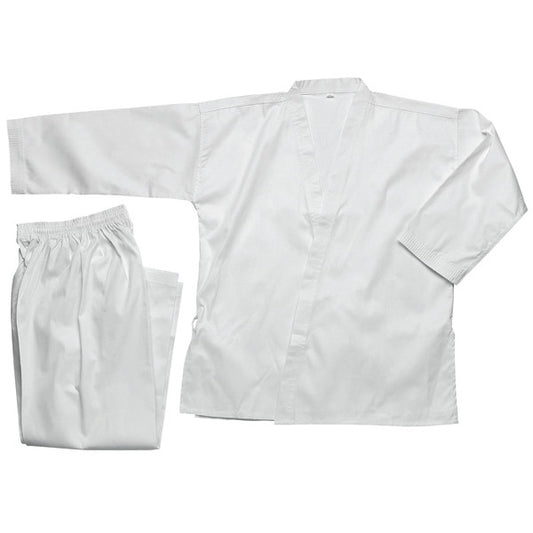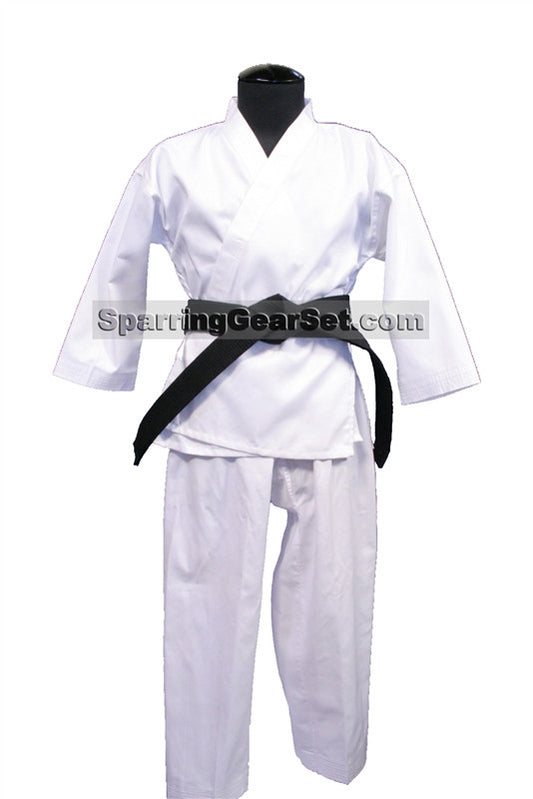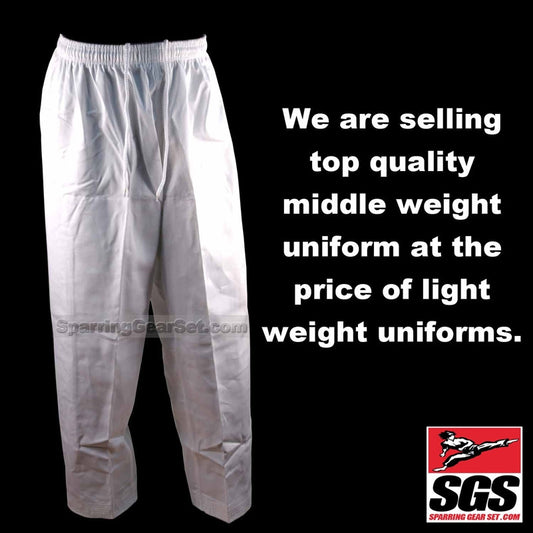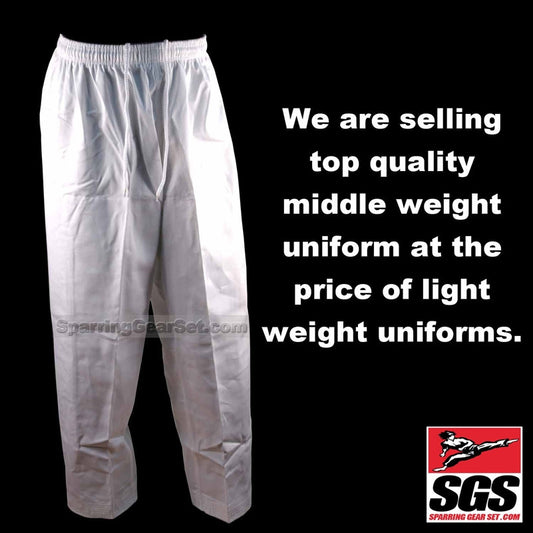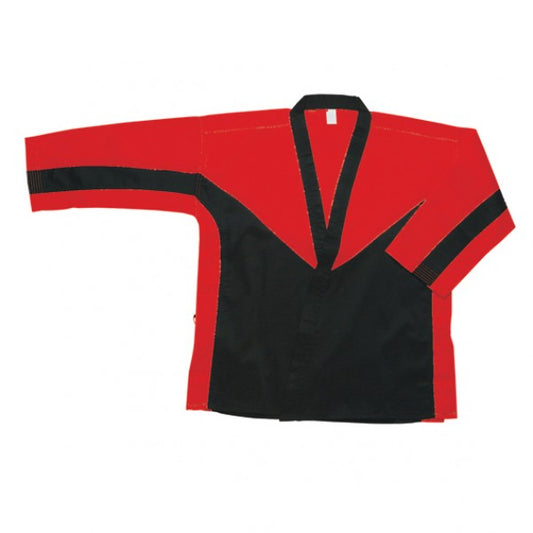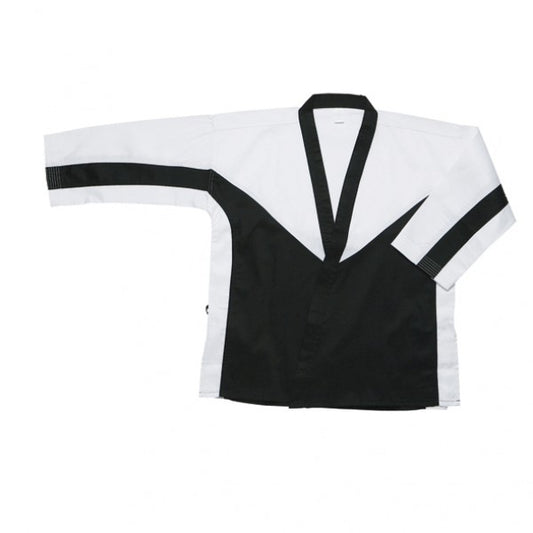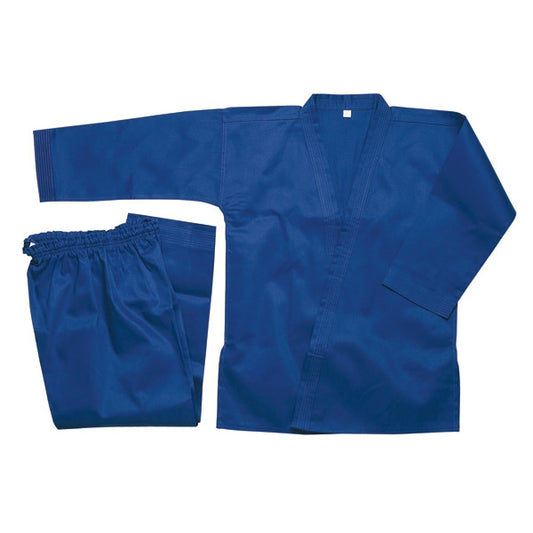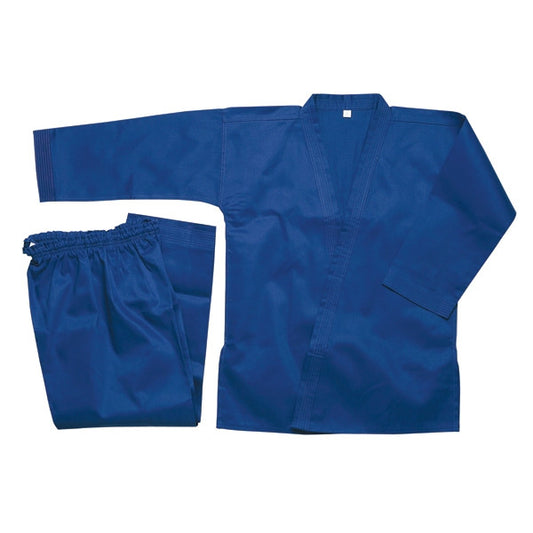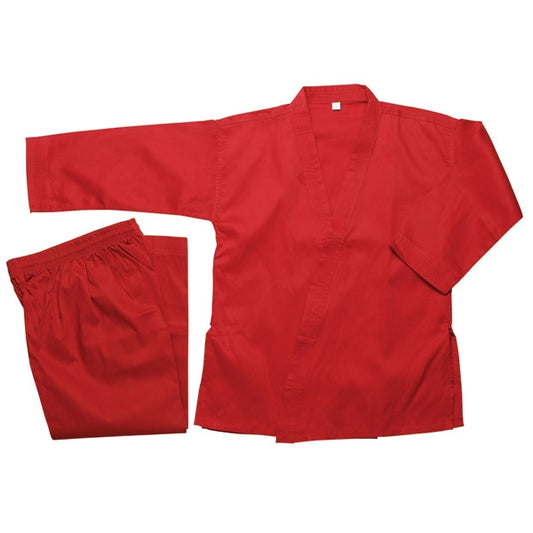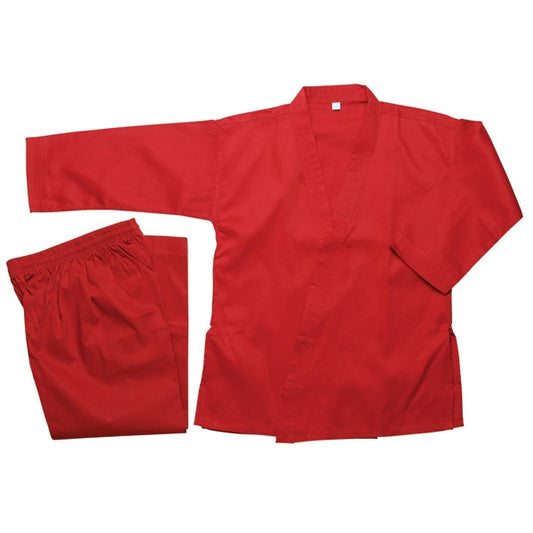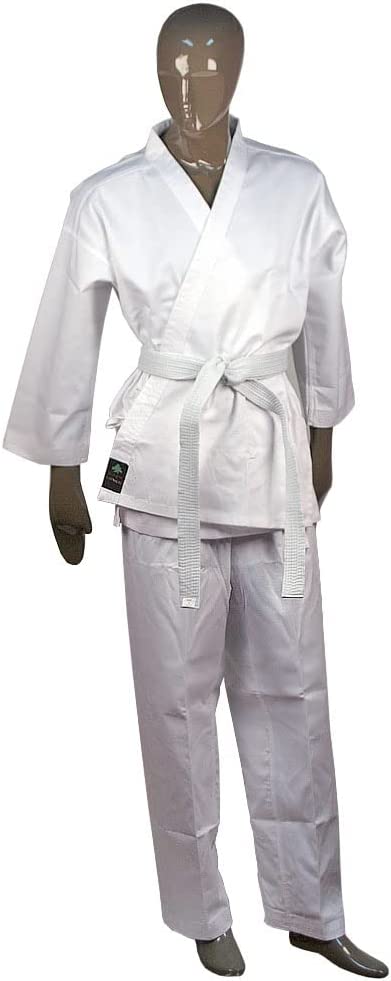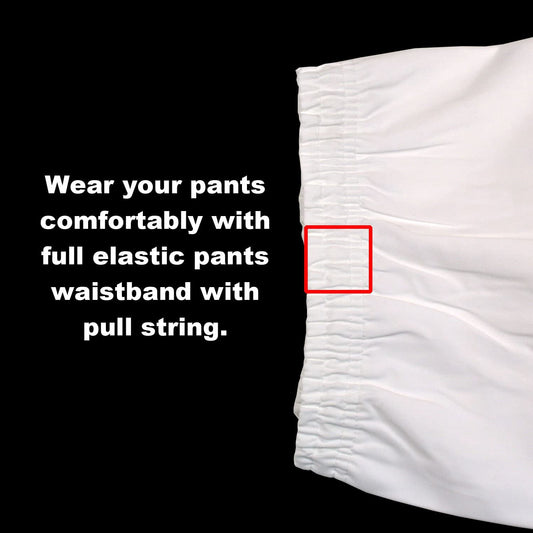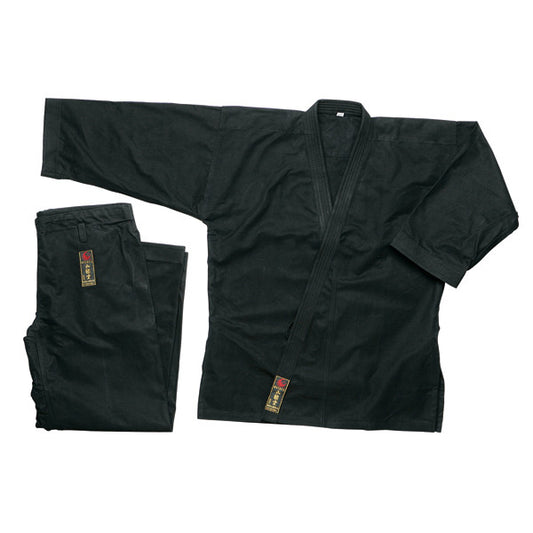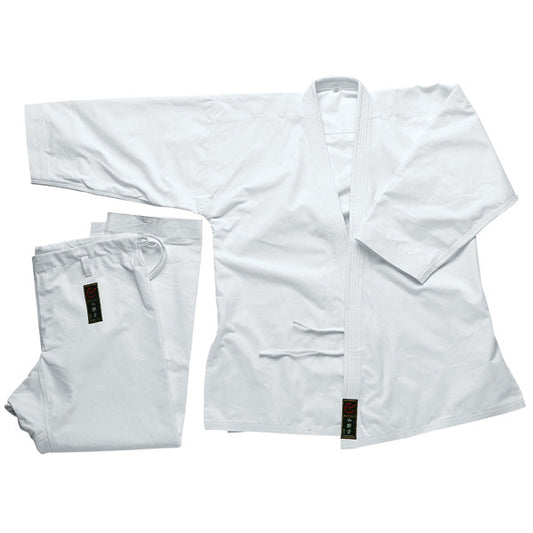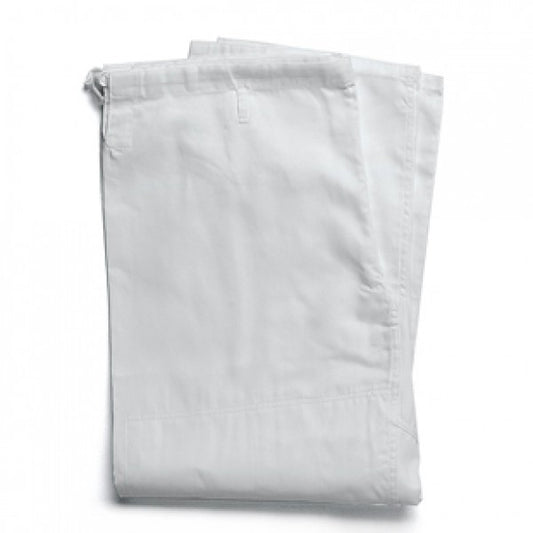Collection: Karate Gi's
open in the front for any type of tying and adjustments, and are often called "y-neck" or "open" uniforms. Karate martial arts itself originated in Okinawa, Japan, but the word "karate" has been used very often in the U.S. to refer to oriental martial arts in general.
To help you decide which uniform is one you're looking for, read on for a basic introduction on different types of karate uniforms you may find as you're looking.
The uniform weight (middle or heavy) differentiates the thickness of the material. It refers to the type of fabric used that is cut into a karate uniform. For example, a "7 oz" karate uniform does not necessarily mean the uniform you receive will be 7 oz, but rather it refers to the weight of a standardized size (before cutting) is used as fabric weight.
Middleweight Karate Uniforms, student karate uniforms, are the most popularly purchased weight. Many martial arts supply manufacturers designate 6, 7, or 8 oz as middleweight uniforms. They are also commonly called student uniforms because a wide range of karate students use this uniform, whether they are beginner (~white or yellow belt), intermediate, or advanced level (~red or black belt).
Traditional and tournament cuts are different in sleeve length, pants length, and sometimes uniform chest circumference.Traditional Cut Karate Uniforms are full-length, and as the name implies, is the norm for most karate uniforms. If the cut is not mentioned in the description, then the uniform is most likely a traditional cut.
Tournament Cut Karate Uniforms have shorter sleeves, and pants. The reason is to expose the hands and feet more for tournament judging, and also to allow you to put on sparring gear easier and faster on the arms and legs.
Karate uniforms with Elastic Pants commonly include a drawstring to ensure the pants do not fall off during training. An elastic band is embedded on the waist of the unform to help keep your pants on.Some uniforms only have the drawstring and no elastic band, which is just a string to tie the pants on at your desired tightness. Heavier uniforms commonly exclude the elastic band, and only have a thicker drawstring because at heavier weights, the thicker drawstring is more effective and more secure.
To help you decide which uniform is one you're looking for, read on for a basic introduction on different types of karate uniforms you may find as you're looking.
Middleweight versus Heavyweight
The uniform weight (middle or heavy) differentiates the thickness of the material. It refers to the type of fabric used that is cut into a karate uniform. For example, a "7 oz" karate uniform does not necessarily mean the uniform you receive will be 7 oz, but rather it refers to the weight of a standardized size (before cutting) is used as fabric weight.
Middleweight Karate Uniforms, student karate uniforms, are the most popularly purchased weight. Many martial arts supply manufacturers designate 6, 7, or 8 oz as middleweight uniforms. They are also commonly called student uniforms because a wide range of karate students use this uniform, whether they are beginner (~white or yellow belt), intermediate, or advanced level (~red or black belt).
Traditional Cut versus Tournament Cut
Traditional and tournament cuts are different in sleeve length, pants length, and sometimes uniform chest circumference.Traditional Cut Karate Uniforms are full-length, and as the name implies, is the norm for most karate uniforms. If the cut is not mentioned in the description, then the uniform is most likely a traditional cut.
Tournament Cut Karate Uniforms have shorter sleeves, and pants. The reason is to expose the hands and feet more for tournament judging, and also to allow you to put on sparring gear easier and faster on the arms and legs.
Elastic+Drawstring Pants versus Only Drawstring Pants
Karate uniforms with Elastic Pants commonly include a drawstring to ensure the pants do not fall off during training. An elastic band is embedded on the waist of the unform to help keep your pants on.Some uniforms only have the drawstring and no elastic band, which is just a string to tie the pants on at your desired tightness. Heavier uniforms commonly exclude the elastic band, and only have a thicker drawstring because at heavier weights, the thicker drawstring is more effective and more secure.
-
12 oz HEAVY WEIGHT KARATE PANTS BLACK
Regular price From $ 25.63Regular priceUnit price / per$ 34.95Sale price From $ 25.63Sale -
12oz HEAVY WEIGHT KARATE PANTS WHITE
Regular price From $ 22.95Regular priceUnit price / per$ 30.95Sale price From $ 22.95Sale -
Color Martial Arts Uniform Pants (Karate and Taekwondo), Blue
Regular price From $ 13.61Regular priceUnit price / per$ 11.95Sale price From $ 13.61 -
Color Martial Arts Uniform Pants (Karate and Taekwondo), Red
Regular price From $ 13.61Regular priceUnit price / per$ 11.95Sale price From $ 13.61 -
Heavy Weight Karate Uniform 12 oz - Black
Regular price From $ 37.71Regular priceUnit price / per$ 59.99Sale price From $ 37.71Sale -
Heavy Weight Karate Uniform 12 oz - Blue
Regular price From $ 48.97Regular priceUnit price / per$ 59.99Sale price From $ 48.97Sale -
Heavy Weight Karate Uniform 12 oz - Red
Regular price From $ 43.85Regular priceUnit price / per$ 59.99Sale price From $ 43.85Sale -
Heavy Weight Karate Uniform 12 oz - White
Regular price From $ 35.25Regular priceUnit price / per$ 59.99Sale price From $ 35.25Sale -
JUDO PANTS -SINGLE WEAVE
Regular price From $ 12.52Regular priceUnit price / per$ 29.95Sale price From $ 12.52Sale -
Karate Uniform 10 oz, Black
Regular price From $ 27.95Regular priceUnit price / per$ 59.99Sale price From $ 27.95Sale -
Karate Uniform 10 oz, White
Regular price From $ 25.95Regular priceUnit price / per$ 59.99Sale price From $ 25.95Sale -
Masterline Student Karate Uniform, Black
Regular price From $ 19.75Regular priceUnit price / per$ 29.95Sale price From $ 19.75Sale -
Masterline Student Karate Uniform, White
Regular price From $ 17.75Regular priceUnit price / per$ 29.95Sale price From $ 17.75Sale -
Middleweight Pants Poly/Cotton (Karate and Taekwondo) - White
Regular price From $ 10.45Regular priceUnit price / per$ 19.99Sale price From $ 10.45Sale -
Open Uniform Jacket - Black / Red
Regular price From $ 15.95Regular priceUnit price / per$ 15.26Sale price From $ 15.95 -
Open Uniform Jacket - Black / White
Regular price From $ 15.95Regular priceUnit price / per$ 15.26Sale price From $ 15.95 -
Student Karate Uniform, Blue
Regular price From $ 19.80Regular priceUnit price / per$ 39.99Sale price From $ 19.80Sale -
Student Karate Uniform, Red
Regular price From $ 23.75Regular priceUnit price / per$ 39.99Sale price From $ 23.75Sale -
Student Karate Uniform, White
Regular price From $ 23.95Regular priceUnit price / per$ 13.66Sale price From $ 23.95 -
Wacoku 14 oz Super Heavy Weight Karate Gi - Black
Regular price From $ 91.75Regular priceUnit price / per$ 88.00Sale price From $ 91.75 -
Wacoku 14 oz Super Heavy Weight Karate Gi - White
Regular price From $ 79.15Regular priceUnit price / per$ 88.00Sale price From $ 79.15Sale -
White KARATE PANTS 10oz Poly/Cotton
Regular price From $ 17.95Regular priceUnit price / per$ 30.95Sale price From $ 17.95Sale

